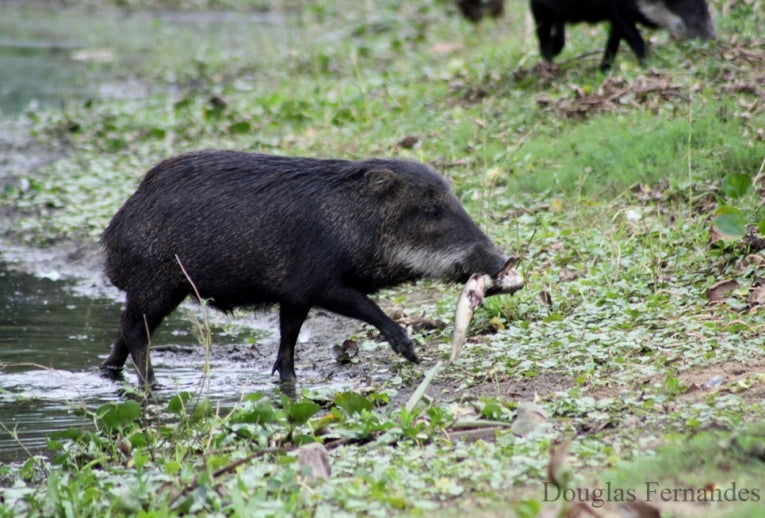The white lipped peccary, Tayassu pecari, eats fruit, writes the Wildlife Conservation Society. Doulas Fernandes took these decisive shots in the Brazilian wetland known as the Pantanal in 2011 and published in every pig-lovers favourite journal, "Suiform Soundings."
Dr Alexine Keuroghlian now reports, "As far as we know, these are the first images of fish consumption by white lipped peccaries." The fish concerned were traira or wolf fish: Hoplias aimara, or a similar species. It's important to know as much as possible about these vulnerable parts of the ecosystem, s hunting and forest depletion makes them rare.
There was previous evidence of fish consumption but these pigs normally ate tubers, grasses and small invertebrates if their fruit supply runs out. As they are near-threatened or even vulnerable, according to latest IUCN reports, the species' habits demand a certain human effort in ecology.
Their effective role in the ecosystem is important as a seed disperser, both in tropical forest and the savannah used by cattle ranchers. Jaguars and pumas also favour the animal as a prey organism. This wonderful species are indeed a perfect indicator of good conservation technique.
Hence the importance of persuading private cattle ranches to use sustainable practices. Rotational grazing will encourage native grasses to provide permanent fodder for cattle, while imported grass species don't adequately support cattle or native peccaries. Getting out there and persuading the powers that be will take some doing, but it looks like the WCS are making progress with this crucial work.










